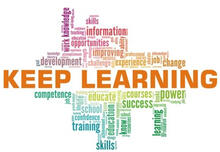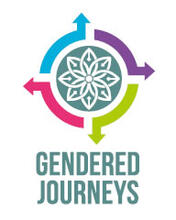Learning transitions can be disruptive and unsettling to any young person. Children aged between 12-25 years old are particularly vulnerable, given how this period can impact on increased risks of anxiety, depressive disorders, and mental illnesses later in life.
What are the factors that can mitigate these risks and turn learning transitions into a time of exciting, empowering, and dynamic change rather than a disruptive and unsettling period?
How can children reap the benefits of learning transitions in their learning journey?
1. RELATIONSHIPS AND TRUST
Authentic relationships, particularly between teachers, parents, and students, are vital in a young person’s life. According to Casper Rongsted of Nordic Schools in Denmark, lowering or decreasing the perceived distance between students and teachers through learning conversations (formative conversations), help support success during learning transitions.
Nordic schools spend much time on fostering a culture of trust and building relationships between teachers and students, using tools for conversation such as the UPV (UP WHAT NOW) framework, a tool for the formative assessment of students that provides insight into how to ask better questions. Higher trust results in a decreased need for assessment or ‘ranking’ students and their work. Additionally, Nordic schools are intentional about equal amounts of talking in the classroom between the teachers and students. Students often stay with the same teacher in a smaller classroom environment for several years to support and maintain the relationships formed in the classroom.
2. TIMING
The timing of major transitions, like changing from primary to secondary school, significantly impacts on school adjustment, especially as many physical and emotional changes occur for children around this time, such as the changes of puberty. Charlotte Bagnall from Manchester Metropolitan University in the United Kingdom conducted research in the United States on when the ‘optimal’ transition time for children would be. Children in the United States transition into high school at age 14, compared to children in Australia and the United Kingdom that experience this transition at age 11 or 12. Her findings show that transition is easier when it matches children’s needs, and when emotionally-centred support is offered at home and school. Furthermore, the maturity level of the child often determines the success of the learning transition, as well as other variables such as school size, classroom practices, and socio-economic levels.
3. BACKGROUND AND LIFE EXPERIENCE
Children from migrant families or refugee backgrounds need special attention when it comes to understanding their transition challenges. Dr Santino Atem Deng from Victoria University in Australia says new arrivals often find the transition into education for their children, and if required for themselves, as extremely daunting and challenging. For instance, families arriving in Australia need to navigate and adjust to a different education system compared to their previous home or displaced context. According to the Federation of Ethnic Communities’ Councils of Australia (FECCA), supported by the Western English Language School (WELS) in Australia, migrant students require targeted advocacy if they experienced a significant interruption to their schooling while living in refugee camps.
Learning transition is a critical period for young people and will be a turning point in their development. Dedicated support from parents and teachers makes for easier transitions which will result in students experiencing less anxiety and embracing changes as a time of growth in their lives.
This article is based on contributions from speakers who participated in Wyndham City Council’s Learning Community online Transformative Education Showcase, held in partnership with Wyndham Community and Education Centre (WCEC) on 24 July 2020. View the full recording of the event.
This piece is based on the research and grassroots experience of our presenters from our Transformative Education Showcase earlier this year in partnership with Wyndham Community and Education Centre, and the key ideas they shared on learning transitions for the 12-25-year-old cohort globally.
This article was originally published on the WISE website: https://lnkd.in/gVFSkze
- Log in to post comments














Latest Comments